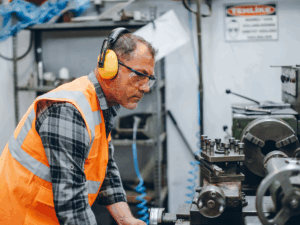November 4, 2022
By John Colquhoun, head of EFI Global UK and Wayne Manton, principal forensic investigator, EFI Global
Germans bracing for the cold winter are scrambling for heat alternatives.
Many older apartments in Berlin still have century-old heating methods despite other buildings having switched to central heating. Burning wood can generate creosote, a toxic, inflammable residue created when wood gases are not completely burned. This chemical residue sticks to the internal surfaces of the chimney, building up to the point where there is a credible risk of a chimney fire. With colder temperatures ahead, the risk of fires is top of mind.
The pyrolysis process
One of the most common causes of fires involving chimneys and chimney flue systems is pyrolysis — otherwise known as the decomposition of a material into simpler compounds brought about by heat — of adjacent organic materials. All fuels have molecules that need to be broken into solid enough “pieces” to undergo combustion. The primary effect of heat on wood or other solid fuel is to decompose or pyrolyse it. Pyrolysis of wood, for example, yields burnable gases like methane, volatile liquids like methanol (in the form of vapours), combustible oils and resins, and water vapour that leaves behind a charred residue, which is primarily carbon or charcoal. Effects of slow, prolonged heating dehydrates and decomposes wood by pyrolytic action.
Building standards and codes
Building standards vary from country-to-country and state-to-state. However, the most detailed building standards relating to stove and flue installations within the United Kingdom are introduced in the UK Statutory Instruments, The Building Regulations 2010 – Approved Document J – Combustion appliances and Fuel Storage systems and The Scottish Building Standards for Domestic buildings’ (March 2017 and September 2019).
These standards state the requirements for safe installation and usage of heat producing appliances, including boilers, chimneys and flues. They advise on safe fuel storage installations, including solid fuel, liquid oil fuels, and gas-fired heating. Most notably, the documents provide information on the safe separation distance between a heat-producing appliance and the associated flue system relative to nearby combustible materials. For instance, the separation distance for a flue (essential when considering a flue fire risk scenario) is dictated by:
- The distance according to the designation of the flue pipe.
- The distance equivalent to at least three times the diameter of the flue pipe. However, this distance may be reduced based on whether or not there is a non-combustible shield or if the flue pipe is enclosed in non-combustible material.
Common loss scenarios
- March 2022
A thatched-roof cottage in Hampshire suffered a fire that destroyed most of the roof. The cause of the fire is believed to have been a burning ember leaving the chimney and landing on the thatch. The regulations state the minimum height of a chimney relative to the roof, such that if a spark is emitted, it cools before landing on the thatch. Spark arrestors can also be installed on the chimney pot.
- January 2022
A wood-burning stove in a kitchen malfunctioned, sending flames back into the house. Investigators determined that the cause was a pipe failure, which pushed the flames out of the stove and into the house.
- December 2020
Following the replacement of a modern open fireplace with a cassette-style stove in Lanark, South Lanarkshire, the structural timbers of the chimney ignited. Fire investigators determined the fire was caused by the lack of a suitable separation between the flue pipe and the structural timbers.
- January 2020
A wood-burning stove chimney was responsible for a structure fire. The investigation showed that the chimney likely exceeded the amount of heat it was designed to handle. As a result, the surrounding wood structure was compromised over time, becoming more susceptible to fire.
- December 2018
Fire department investigators determined that an improperly vented pellet stove caused a house fire. Gaps and cracks in the chimney let heat escape into the attic, igniting insulation and wood framing.
- November 2018
In Muir of Ord, Highlands, an open fireplace was removed, and a flue liner and modern stove were installed into a 200-year-old chimney. Approximately three months later, the owner lit a fire and noticed smoke coming from the chimney breast. Fire investigators determined the fire was caused by the ignition of original timbers built into the chimney breast by the increased temperature of the flue gases from the modern stove and chimney flue systems.
- August 2018
Kippin, Stirlingshire, homeowners arrived and noticed a fire. Investigators determined the fire was caused by the separation of the unsupported flue pipe causing combustion gases to enter a void in the roof structure, which ignited combustible materials.
- December 2017
A historic public house in Cornwall was devastated by a fire, destroying most of the roof structure. Investigators found that a historical flue fire had damaged a double-wall insulated flue associated with an open fireplace, routed up through the original chimney structure. The damaged system was not removed, instead a single skin flue liner was installed within it and a register plate installed, closing off ventilation to the chimney structure. The damaged system, soot deposits, lack of ventilation and ultimately elevated flue temperatures caused the ignition of timber roof components that were likely too close to the flue.
Stove safety guidelines
Qualified professionals should always oversee the installation of a new stove and chimney to ensure safety. Post-installation, there are also steps individuals can take to reduce the risk of a fire. This includes regularly sweeping chimneys, removing and disposing of ashes once cool, and checking stove latches, hinges, and gaskets. Vents chimneys and fireplaces need to be inspected at least once per year and receive repair, maintenance, or cleaning when necessary.
EFI Global, part of Sedgwick, is a well-established brand with an excellent reputation in the Americas, Africa, Asia-Pacific and Europe as a market leader in environmental consulting, engineering failure analysis and origin-and-cause investigations. Our multidisciplinary team of first responders are selected for their technical proficiency and in-depth industry knowledge to aid clients in resolving technical problems. EFI’s fire investigators are committed to following the recognised industry standards in investigating and examining fire scenes. For more information, visit our website or contact [email protected] or [email protected]



